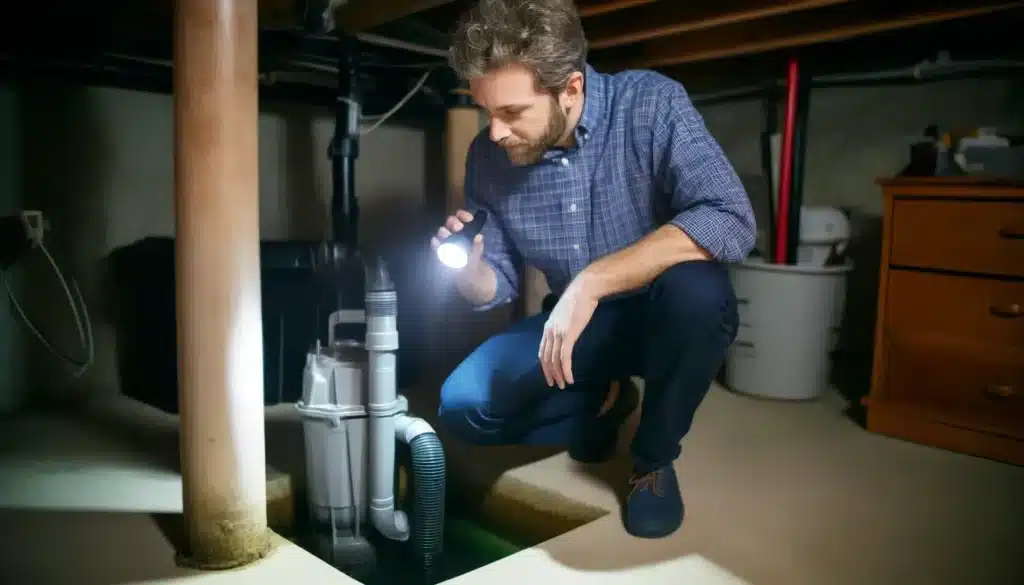5 Maintenance Tips for Sump Pumps Before the Rainy Season
Plumbing Solutions of Idaho expert tips

Spring in Boise can be unpredictable. One day it’s sunny and breezy, and the next—it’s a torrential downpour. If you have a basement or crawl space, your sump pump is your first line of defense against flooding. And the last thing you want is to discover it’s not working after the water starts rising.
Before the rainy season hits its stride, a little maintenance now can save you from costly repairs and major water damage later.
Here are five straightforward but essential sump pump maintenance tips from our Boise plumbing experts to help you protect your home.
Have questions or need to schedule service? Reach out to the pros at Plumbing Solutions of Idaho today!
1. Test the Sump Pump With Water
Let’s start with the simplest check: making sure your pump still turns on.
Grab a bucket or pitcher and pour water into the sump pit until the float rises. A working sump pump should automatically turn on and begin pumping water out. If it doesn’t activate, or if it sounds like it’s straining, call in a professional for sump pump service in Boise, ID before the next storm rolls in.
If the pump doesn’t shut off when the water is gone, that’s another red flag. Your float switch might be stuck—or the entire unit might need attention.
Need a hand troubleshooting? Our sump pump experts can diagnose the issue and make sure your system is storm-ready.
2. Clear Out the Sump Pit
Over time, sump pits collect all kinds of debris: dirt, gravel, hair, even small toys or socks if you’ve got little ones. This gunk can clog the pump’s intake screen or jam the float, preventing it from activating when you need it most.
To clean the pit:
- Unplug the sump pump and remove it from the basin.
- Scoop out the debris at the bottom.
- Check the intake screen on the pump and rinse off any buildup.
- Place the pump back and plug it in securely.
If you notice excessive sludge, or you’re not comfortable lifting the pump yourself, we offer professional plumbing services in Boise and beyond and can do a full cleanout and inspection for you.
3. Check the Power and Backup System
Your sump pump needs consistent electricity to work—which means if your power goes out during a storm, your pump goes silent, too.
That’s why we recommend every Boise homeowner with a sump pump also install a battery backup system. These kick in automatically during outages to keep your basement dry no matter what’s happening above ground.
Even if you have a battery backup, test it. Press the test button or simulate a power outage by unplugging your pump to see if the battery unit takes over.
If your power cord is frayed, loose, or plugged into an unreliable outlet, it’s time to get that checked by a licensed plumber—especially before the height of rainy season.
4. Inspect the Discharge Line
Your sump pump’s job is to move water away from your home. But if the discharge line is blocked, frozen, or positioned too close to your foundation, it can send water right back in.
Here’s what to do:
- Trace the pipe from the sump pump to where it exits your home.
- Make sure the pipe is angled away from your foundation and terminates at least 10 feet from the house.
- Look for signs of clogs or freeze damage. If you can’t see inside the pipe, use a broom handle to gently test for obstructions (just don’t force it—you don’t want to get it stuck).
If you notice drainage issues or backups, it might be time for more than a sump pump fix. There could be problems with your home’s piping or drain lines that need professional attention.
5. Monitor for Warning Signs of Trouble
Your sump pump can’t talk—but it can signal that something’s off if you know what to listen and look for.
Here are a few signs your sump pump may be on its way out:
- Strange noises like grinding, humming, or rattling
- Frequent on-off cycling even when it’s not raining
- Vibrations or shaking when it runs
- Visible rust or corrosion on the unit
Also, be aware of any musty smells or signs of moisture near the sump pump—even if it hasn’t rained recently. These may point to slow leaks or sensor malfunctions.
If anything feels “off,” don’t wait for a flood. Schedule a leak detection or sump pump inspection right away to catch the issue early.
Stay Dry This Season: Start With Your Sump Pump!
It’s easy to forget your sump pump is there. But when you need it, you really need it. A quick checkup now can be the difference between a dry basement and thousands of dollars in water damage.
Whether you need routine sump pump maintenance in Boise, ID, emergency repairs, or advice on a battery backup system, Plumbing Solutions of Idaho is here to help.
Contact us today to schedule a service or inspection—before too much rain starts falling.